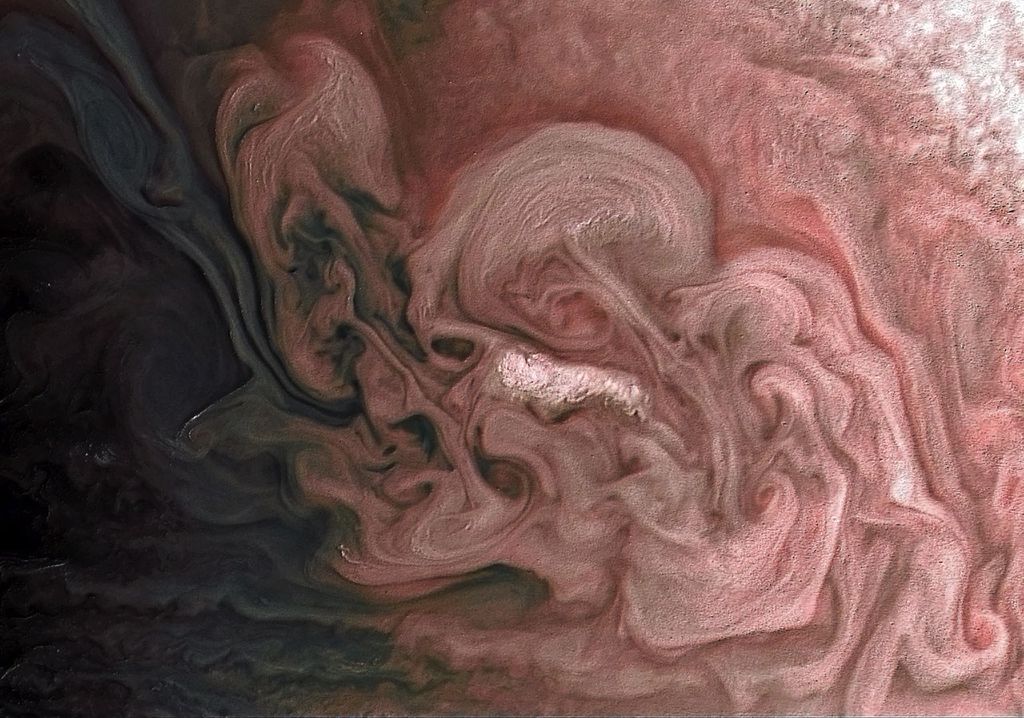Another Quantum Leap: NASA Expands Lab to Enable Next-Gen Space Missions
Sometimes the coldest spot in space can generate hot new ideas. NASA's Cold Atom Lab, designed and built at the agency's Jet Propulsion Laboratory, creates temperatures one ten billionth of a degree above absolute zero — colder than any naturally occurring spot in the universe.
The Biological and Physical Sciences (BPS) division of NASA funds and manages this specialized facility on the International Space Station. Scientists with the Cold Atom Lab have pushed the boundaries of fundamental physics, developing valuable quantum expertise that has enabled them to provide strategic insights that inform other NASA missions.
Ultra-Cold Science, No Parkas Required
The Cold Atom Lab creates Bose-Einstein condensates — clouds of atoms cooled to the coldest temperature matter can reach. In microgravity, Bose-Einstein condensates can reach colder temperatures more easily and exist for longer than those created in Earth-based laboratories, giving researchers more opportunities to study them. And scientists don't need to leave Earth to run these ultra-cold experiments on the space station; they control everything from their desks.
The Cold Atom Lab is also the first space-based facility to use Bose-Einstein condensates in atom interferometry, a technique that uses the wave-like nature of atoms to measure properties of the environment with extraordinary precision. Atom interferometers split atom waves and then recombine them.
Imagine dropping two pebbles in a pond and watching how the ripples interact — creating patterns of high waves where they meet and flat spots where they cancel out. Atom interferometers work similarly, but with atoms instead of water. By studying these patterns, scientists can detect tiny changes in gravity that affect how the waves interact.
In the microgravity environment of space, the atoms experience longer freefall times, which makes subsequent measurements of their interactions more precise. Scientists with the Cold Atom Lab are working toward using space-based atom interferometry to measure gravity in space. Future missions could use this technique to track the movement of water on Earth, study the composition of other planets and moons from orbit, and improve spacecraft navigation.
“Seeing” the Invisible with NASA's Quantum Sensors
The Cold Atom Lab team's expertise has helped pave the way for the start of the Earth Science Technology Office’s Quantum Gravity Gradiometer (QGG) pathfinder project.
The QGG is a technology demonstration instrument, sponsored by NASA’s Earth Science Technology Office (ESTO) that will use advanced atom interferometry to test technologies needed to measure Earth's gravitational fields from space with unprecedented accuracy. Like a quantum stethoscope, the QGG instrument will be able to detect the gravitational "heartbeat" of matter moving beneath Earth's surface by measuring tiny changes in the pull of gravity.
Quantum-sensing capabilities like those in QGG could help scientists:
- Understand ice sheet thickness on Earth for climate change research
- Explore what lies beneath the surface of other planets and their moons
- Support NASA's Moon to Mars program with gravity mapping
- Locate water resources on other planets for future exploration
- Study unexplained cosmic mysteries like dark matter and dark energy
- Develop navigation systems far more precise than GPS for spacecraft
The quantum expertise developed through the Cold Atom Lab provides a strong technical foundation for QGG and future missions. NASA continues to build on this research to expand our understanding of Earth and space.
The U.S. Quantum Science Edge
NASA’s fundamental quantum research catalyzesinnovation and benefits multiple scientific areas.
The Cold Atom Lab has helped position NASA as a world leader in space-based quantum research. The U.S. is currently the only nation with a continuously operating quantum physics facility in space. The expertise developed for the Cold Atom Lab has created a unique team of quantum specialists who can now support a variety of NASA's scientific and exploration goals.
The project has also strengthened U.S. commercial and academic capabilities in quantum technologies. Work on the Cold Atom Lab has advanced quantum technology development in both industry and academia. Small businesses and university spinoffs that developed components for the lab have enhanced their technical capabilities. These vendors improved their laser systems, experimental apparatus, and other components that now have potential applications beyond NASA missions.
As quantum technologies advance, the specialized teams assembled by NASA are paving the way for future missions. The Cold Atom Lab demonstrates how fundamental research has the potential to solve practical challenges while opening new frontiers of discovery.
Related Resources:
- NASA Demonstrates ‘Ultra-Cool’ Quantum Sensor for First Time in Space
- NASA Aims to Fly First Quantum Sensor for Gravity Measurements
- The Cold Atom Lab
NASA’s Biological and Physical Sciences Division pioneers scientific discovery and enables exploration by using space environments to conduct investigations not possible on Earth. Studying biological and physical phenomenon under extreme conditions allows researchers to advance the fundamental scientific knowledge required to go farther and stay longer in space, while also benefitting life on Earth.

























